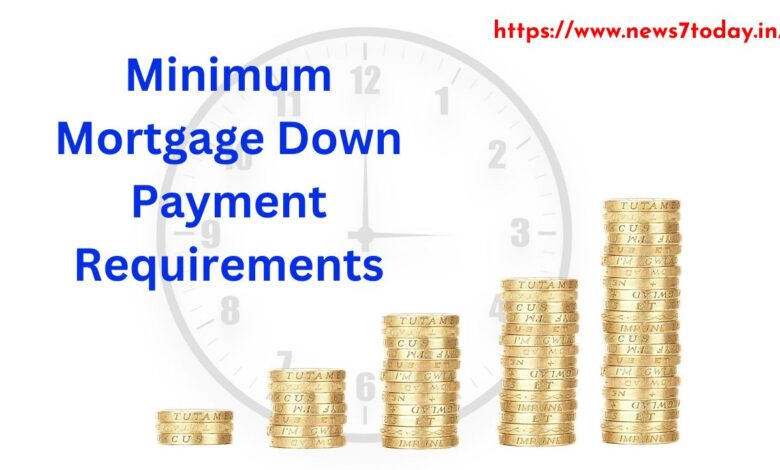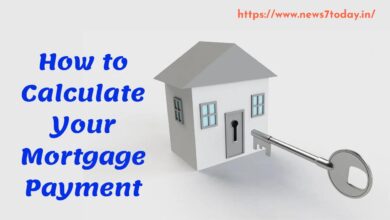The Minimum Mortgage Down Payments: How Much Should You Save?

When purchasing a home with a mortgage down payment is the upfront payment made by the buyer. Understanding the amount required for a down payment is crucial before entering the homebuying process. In this article, we will explore the factors affecting mortgage down payments, minimum down payment requirements for different loan types, options for meeting the down payment, and the impact of the down payment on mortgage terms.
Factors Affecting Mortgage Down Payment
Loan type – Different loan programs have varying down payment requirements.
Loan-to-value ratio (LTV) – The LTV ratio compares the loan amount to the appraised value of the property.
Credit score – A higher credit score may result in more favorable down payment terms.
Income and debt-to-income ratio – Lenders consider your income and debt obligations to determine down payment requirements.
Property type and occupancy – The type of property you’re buying and whether it will be your primary residence can influence mortgage down payment requirements.
Minimum Mortgage Down Payment Requirements
Conventional mortgages – Typically require a mortgage down payment of 3% to 20% of the home’s purchase price.
FHA loans – Offer more lenient requirements, with a minimum down payment of 3.5% for borrowers with a credit score of 580 or higher.
VA loans – Provide options for eligible veterans and active-duty service members, often allowing for no down payment.
USDA loans – Designed for rural homebuyers, these loans may require no down payment or a small down payment of 1% to 3%.
Options for Meeting the Mortgage Down Payment
Saving strategies – Set a budget, automate savings, and explore mortgage down payment assistance programs.
Down payment assistance programs – Research local and national programs that offer grants or loans to help with the down payment.
Gift funds from family or friends – Consider receiving financial gifts from loved ones to supplement your mortgage down payment.
Borrowing against retirement funds – Some retirement accounts allow borrowing for a down payment, but evaluate the potential risks and tax implications.
Impact of Down Payment on Mortgage Terms
Lowering monthly payments – A larger down payment can reduce your monthly mortgage payments.
Reducing interest costs – A higher down payment can result in lower overall interest charges over the life of the loan.
Avoiding private mortgage insurance (PMI) – A down payment of at least 20% typically eliminates the need for PMI.
Building equity faster – A larger down payment helps build equity in your home more quickly.
How Much Money Do I Need to Put Down on a Mortgage?
The amount of money you need to put down on a mortgage can vary depending on several factors, including the lender’s requirements, the type of mortgage you’re applying for, and your financial situation. Traditionally, it is recommended to make a mortgage down payment of at least 20% of the home’s purchase price. However, it’s important to note that this percentage is not set in stone and there are options available with lower down payment requirements.
Here are some common mortgage down payment options:
1. 20% or more – Putting down 20% or more of the home’s purchase price is considered a conventional down payment. This amount allows you to avoid private mortgage insurance (PMI) and may also result in more favorable loan terms and interest rates.
2. 3% to 5% – Some lenders offer mortgage programs that allow for a down payment as low as 3% to 5%. These programs are often aimed at first-time homebuyers or those with limited funds for a larger down payment. However, be aware that with a smaller down payment, you may be required to pay for PMI.
3. 0% to 3% – Certain government-backed loans, such as FHA (Federal Housing Administration) loans and VA (Department of Veterans Affairs) loans, offer low or zero down payment options. FHA loans typically require a down payment of 3.5%, while VA loans may not require a down payment at all. However, these loans often have additional eligibility requirements.
It’s important to consult with lenders and explore your options to determine the specific mortgage down payment amount required for the mortgage you’re considering. Additionally, keep in mind that a higher down payment can lower your monthly mortgage payments and reduce the overall interest paid over the life of the loan.
How Much House Can You Afford?
Determining how much house you can afford depends on various factors, including your income, monthly expenses, credit score, down payment amount, and current interest rates. Here are some general guidelines to consider:
1. Calculate your budget – Assess your monthly income and expenses to understand how much you can comfortably allocate towards housing costs. A common recommendation is to spend no more than 28% to 30% of your gross monthly income on housing expenses, including mortgage payments, property taxes, and insurance.
2. Consider your down payment – Determine how much you can afford to put down as a down payment. Remember that a larger down payment can lower your monthly mortgage payments and potentially help you qualify for better loan terms.
3. Factor in additional costs – In addition to the mortgage payment, consider other costs associated with homeownership, such as property taxes, homeowner’s insurance, utilities, maintenance, and potential homeowner association (HOA) fees. These expenses can vary based on your location and the size of the property.
4. Get pre-approved for a mortgage – It’s advisable to get pre-approved for a mortgage before house hunting. This involves providing your financial information to a lender who will assess your creditworthiness and provide an estimate of the loan amount you may qualify for. However, it’s important to remember that just because you’re pre-approved for a certain amount doesn’t mean you have to spend the maximum.
5. Consider your long-term financial goals – Evaluate how homeownership fits into your long-term financial plans. Owning a home involves more than just the mortgage payment, and you should ensure that you can comfortably afford your monthly obligations while still saving for other goals, such as retirement or emergencies.
Remember, these are general guidelines, and it’s crucial to assess your personal financial situation and consult with a mortgage lender or financial advisor who can provide tailored advice based on your specific circumstances.
Conclusion
Understanding how much money you need to put down on a mortgage is essential for homebuyers. Consider the factors affecting down payment requirements, explore different loan types, and evaluate the options available for meeting the down payment. Consulting with a mortgage professional can provide personalized guidance based on your financial situation and homeownership goals. Start planning early to ensure a smooth homebuying journey.
Frequently Asked Questions
Q. What is a mortgage down payment?
A mortgage down payment is the initial payment you make towards the purchase of a home. It is typically expressed as a percentage of the total purchase price of the property.
Q. Why is a down payment required?
Lenders require a down payment as a way to mitigate the risk associated with the mortgage loan. It demonstrates your financial commitment to the property and reduces the lender’s exposure in case of default.
Q. How much should I put down as a down payment?
The ideal down payment amount varies depending on factors like the type of mortgage, your financial situation, and the lender’s requirements. Traditionally, a down payment of 20% of the purchase price is recommended to avoid private mortgage insurance (PMI). However, lower down payment options, such as 3% to 5%, may be available.
Q. What is private mortgage insurance (PMI)?
PMI is insurance that protects the lender in case the borrower defaults on the loan. It is typically required when the mortgage down payment is less than 20% of the purchase price. The cost of PMI is added to your monthly mortgage payments.
Q. Are there any down payment assistance programs available?
Yes, there are various mortgage down payment assistance programs provided by government agencies, nonprofits, and some financial institutions. These programs can help eligible borrowers with their down payment and closing costs.
Also Read Now – Down Payment: What It Is and How Much Is Required
What Is a Mortgage? Types, How They Work, and Examples
How Long Does Buying a Home Take?
Navy Federal Pre Approval Car Loan: Simplify Your Car Buying Process
The Importance of Routine Veterinary Care: Pet Insurance Best Guide






3 Comments